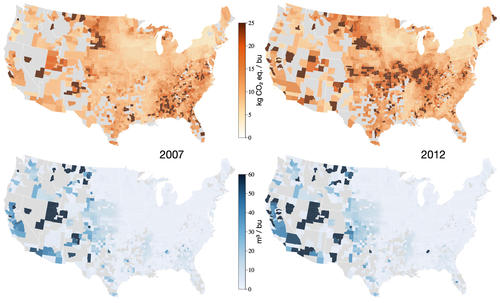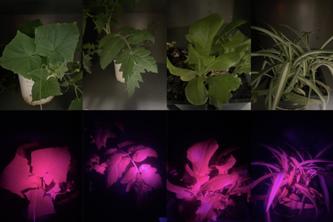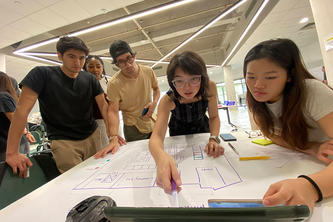
It’s well known that meat has a high environmental impact, largely because of the amount of corn animals are fed, in contrast to the protein they yield. And yet not all corn is created equal – water and fertilizer use varies, along with the greenhouse-gas emissions associated with its production.
Until now, U.S. stakeholders trying to assess – and improve – the sustainability of their supply chains had to rely on one coarse national estimate for the upstream environmental impact of corn production.
New research from the University of Minnesota drills down to the county-level impact of corn production, connecting it for the first time to where corn likely winds up – based on the facility-specific demand of large-scale U.S. corn consumers, which include meat and ethanol producers. Published in the Proceedings of the National Academy of Sciences, the innovative research reveals that the environmental impact of corn varies significantly across geographic consumption locations of sectors and individual producers.

Figure 1: Variations in the greenhouse-gas emissions (kilograms per bushel) and irrigated water use (cubic meter per bushel) of U.S. corn production. Image courtesy of the Proceedings of the National Academy of Sciences.
“Even leading companies don’t know where all their corn is coming from – and therefore have little opportunity to manage supply-chain risk or improve environmental performance upstream,” said Jennifer Schmitt, director of the NorthStar Initiative for Sustainable Enterprise (NiSE) at the University’s Institute on the Environment (IonE). “Our approach significantly improves supply-chain transparency – and provides a starting place for companies that are interested in better managing their upstream environmental impacts.”
The researchers, led by Timothy Smith, a professor in the College of Food, Agricultural and Natural Resource Sciences and an IonE Fellow, used publicly available data from 2007 and 2012 to paint a granular picture of corn’s impact across the United States, revealing which counties use the most irrigation water and produce the most greenhouse gas emissions per bushel. Connecting this data to corn consumers through a newly developed NiSE tool (foods3.org), revealed insights into the impacts of corn consumption across counties, states, industry sectors, and meat and ethanol companies, as well as individual facilities.
U.S. pork producers, for example, tend to source relatively high-carbon, but less water-intensive corn. Beef producers, on the other hand, use corn that is two times more water-intensive than average and almost 4.5 times as water-intensive as the corn fed to pigs.

Figure 2: Estimated 2012 corn supply-chain CO2e (carbon-dioxide equivalent) emissions and irrigated water use for ethanol and animal protein sectors and large downstream companies. Table courtesy of the Proceedings of the National Academy of Sciences.
While the upstream impacts of major commodities such as corn are largely outside the direct control of the downstream companies that purchase them, large buyers do have significant power to influence how their purchased inputs are produced.
“Downstream consumer-brand companies are increasingly making commitments to reduce environmental impacts across their supply chains, and they need better information to target their efforts toward meeting them,” Smith said. “This work not only helps companies report supply-chain impacts more accurately, but also helps identify hot spots across their networks for intervention.”
PNAS provides journalists with access to content through its EurekAlert! interface. Journalists should register with EurekAlert! Once registered, journalists can directly access this article through this link.
ABOUT THE INSTITUTE ON THE ENVIRONMENT
Founded in 2007, the University of Minnesota’s Institute on the Environment is driven to discover solutions to our world’s most pressing environmental challenges – and to prepare the next generation of sustainability leaders. We focus on the energy transition, climate adaptation, global water and land use, sustainable enterprise, and reimagining how we value nature.
- Categories:
- Agriculture and Environment





